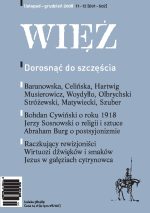
We kindly inform you that, as long as the subject affiliation of our 300.000+ articles is in progress, you might get unsufficient or no results on your third level or second level search. In this case, please broaden your search criteria.

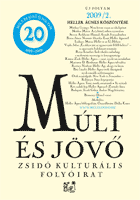
Journals subsequently canonized by history for their importance generally claim their privileged position on account of the labor of those prominent persons who not merely published their works in, but who wrote specifically for the journal and for the cause such publication stood for, works created within the productive dialogue characterized by the tension of the insider and the external author “for hire”. Such flagship and prominent role were those of Endre Ady and Nyugat, Avigdor Hameiri and our predecessor József Patai, editor of Múlt és Jövô. Such mutually and consciously chosen roles have been emphatically underlined by the publication of special issues during the lifetime of these authors. The legitimization of our 20 year existence is linked in such way to Ágnes Heller. All comparisons are somewhat forced and superficial, yet are suitable for highlighting characteristic features, as well as their shades. The pole bearers of Hungarian culture have been traditionally its poets — uniters of the thought (philosophy) and lyric (music)— and the discourse and value system of the genius of the nation centered around them. Ady laid the foundations of contemporary Hungarian life and culture, his good friend and follower Hameiri performed this function a continent away, in Palestine and Israel — but no such classical role would be accorded to a a Jewish poet in Hungary. This is still the case. On the other hand, the role available is one of analysis, criticism, the freedom and fate (or fatelessness) of being concurrently an insider and perennial outsider. This is the role that crystallized in the ouvre of Ágnes Heller — on occasions at a level of poesis, at a level affecting most (indeed all) continents — and more renowned and respected outside of Hungary than within. Her first manuscript reached us from New York, our first personal meetings took place in various borrowed apartments in Budapest. For us, the greatest honor was the ability to participate in the process of her homecoming, while we, as well as our readers, were able to be liberated through her to the world, of which she is a global intellectual emissary. Fully cognizant of this privileged and honored position and using her 80th birthday as a mere excuse, we dedicate this issue, in lieu of a Festschrift, to express our gratitude to her.
More...
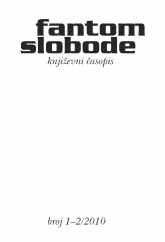
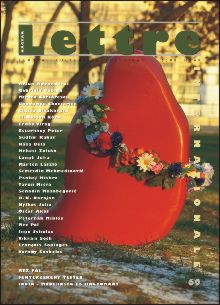



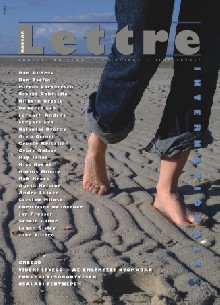


Fotografie Jakuba Pajewskiego są jak obrazy albo wiersze. Zazwyczaj czarno-białe, bo – jak mówi – kolor jest w fotografii zbędny. Prace te, bez względu na to, czy ich bohaterem jest pejzaż czy człowiek, są bardzo sensualne, momentami elektryzujące zmysłowością, a równocześnie metafizyczne.
More...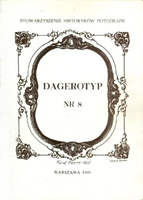
Photographic exhibitions in Poland in 1998/1999. Digitalized and reedited material
More...
Detailed information on Polish publications concerning photography in 1997-1999. Digitalized and reedited material
More...
The paper offers a brief information about a set of 300 photographs (13 x 18 cm) showing ruined Warsaw at the beginning of World War II, showing bombed streets, demolished churches, tenement houses and public buildings (state institutions, schools, hospitals, railway stations), as well as graves of deceased soldiers and civilians. The photographs had been hidden throughout the war and German occupation, since 1988 constituting the property of The Main Commission for the Investigation of Crimes against the Polish Nation - The Institute of National Memory. On the back of the prints (often provided with a precise date) one can see an ink stamp with a strangely sounding name of the photographer. The whole mystery was solved after the photographs had been broadcast during a television programme „Świadkowie” (Witnesses), as the result of which the photographer’s relatives identified themselves. The photographs appear to have been taken by a retired employee of the Warsaw gasworks, Antoni Wiktor Jarema Bończa-Snawadzki (1892-1940?). The name on the stamp was in fact his artistic pseudonym, derived from the first two letters of the name and coat-of-arms (An-Wi-Ja-Bo) and the last six letters of his real family name (-wadzki). Anwijabowadzki took his photographs between the capitulation of Warsaw (September 28th, 1939) and January 1940 when he was arrested by the Germans and most likely executed. Snawadzki must have taken more photographs, since 38 of his pictures arc kept at the Historic Museum of Warsaw. However, nothing is known about negatives of all the photographs. Digitalized and reedited material
More...
The paper presents a report on the scholarly conference held at the Ethnographic Museum in Šiauliai (Lithuania). The questions of old photography were dealt with by: L. Klimek (Lithuania): “The First Appplication of Photography in Astrophysical Investigation of Sun Spots at Vilnius Observatory in the mid-19th Century”, A. Snitkuviene (Lithuania): “Photographer B.H. Tyszkiewicz’s Creative Remains”, D. Junevičius (Lithuania): “J. Czechowicz’s Predecessors. The Earliest Photographic Views of Vilnius”, S. Žvirgždas (Lithuania): “Aleksandras Jurašaitis - A Chronicler of the Lithuanian National Revival”, J.B. Kucharska (Poland): “Henryk Poddębski (1890-1945)”, and M. Jańczyk, M. Mach (Poland): “The Past and Present of Photography in the Museum Collection”. Digitalized and reedited material
More...
The present paper is the first detailed and analytical research into the earliest photography in Lithuania, carried out on the grounds of contemporaneous diaries, memoirs and private correspondence, as well as official documents, printed leaflets, but first and foremost of daily newspapers. The article is divided in three sections: Photography in Vilnius, Photography in Kaunas and other Lithuanian towns, Photography and society. Digitalized and reedited material
More...
The paper presents some critical remarks on the exhibition held at the Museum of Sculpture of Alfons Karny (branch of District Museum in Białystok) between June and July 1998. The majority of the exhibited photographs were wrongly or imprecisely dated, whereas in some cases their iconography was erroneously defined. Digitalized and reedited material
More...

A list of foreign acquisitions concerning photography of the Library of the IS PAN in 1998/1999. Digitalized and reedited material
More...
Paweł Żak należy do grona fotografów, którzy z niebywałą lekkością potrafią posługiwać się tym, co starzy mistrzowie zwykli nazywać światłem obrazu.
More...